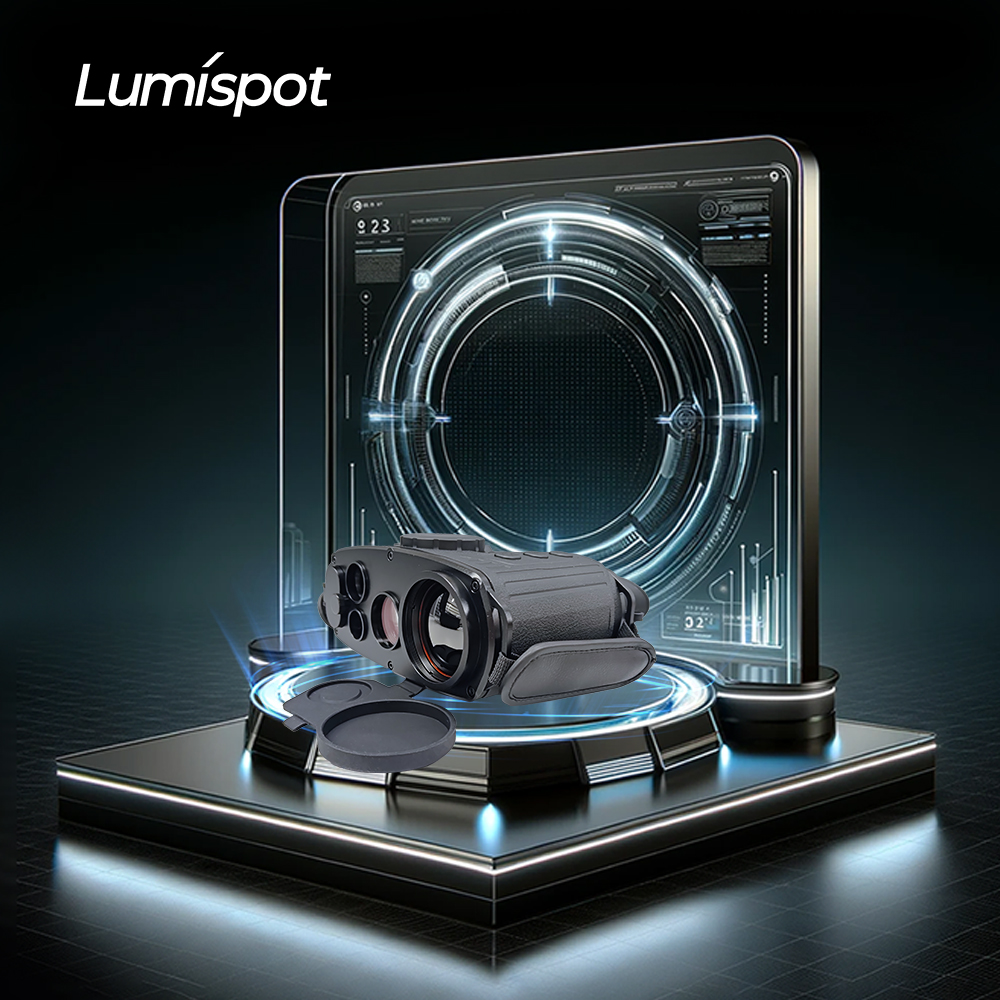With the continuous advancement of technology, thermal imaging technology has gained widespread attention across various industries. In particular, the binocular fusion thermal imager, which combines traditional thermal imaging technology with stereoscopic vision, has greatly expanded its application scenarios across different fields. From security surveillance to wildlife monitoring, and even in military domains, the emergence of binocular fusion thermal imagers has brought revolutionary changes to these areas.
A binocular fusion thermal imager is based on the combination of thermal imaging technology and the principles of stereoscopic vision. Traditional thermal imagers capture thermal radiation through infrared detectors, generating thermal images of objects at different temperatures. In contrast, the binocular fusion thermal imager utilizes two thermal imaging sensors to capture thermal images of the same scene from different angles. These two images are then merged and processed using computer algorithms to generate a thermal image in three-dimensional space.
The core of this binocular fusion technology lies in simulating the human eye’s binocular vision system. By calculating the depth information of a target based on the difference between the left and right perspectives, it produces a three-dimensional representation of the object. The fused image not only retains the high sensitivity of thermal imaging but also accurately presents the spatial position and depth information of the target object.
Advantages of the Binocular Fusion Thermal Imager:
1. Precise Three-Dimensional Imaging:
Through the stereoscopic imaging of the binocular vision system, it can obtain depth information of the target object. This allows the binocular fusion thermal imager to provide more precise spatial positioning and object detection, even in complex environments, such as low light or smoky conditions, where it still offers clear three-dimensional imaging.
2. Enhanced Target Detection Capability:
In dynamic monitoring, traditional monocular thermal imagers may cause misjudgments or fail to detect moving targets due to the target’s movement or changes in the environment. Binocular fusion technology, through multi-angle image fusion, effectively reduces errors and improves target recognition rate and accuracy, especially in tracking and locating moving targets.
3. Broader Application Scenarios:
The three-dimensional imaging ability of the binocular fusion thermal imager has enabled its application in many fields where traditional thermal imagers could not be used. For instance, in search and rescue, autonomous driving, and robot navigation, precise depth perception and spatial positioning are crucial, and the binocular fusion thermal imager fulfills these needs.
4. Improved Human-Machine Interaction:
The binocular fusion thermal imager can be integrated with virtual reality (VR) and augmented reality (AR) technologies to provide a more enriched interactive experience. In fields like industrial inspection and military training, users can monitor and operate through real-time 3D thermal images, improving work efficiency and operational accuracy.
Application Fields of Binocular Fusion Thermal Imagers:
1. Security Surveillance:
In the field of security surveillance, the binocular fusion thermal imager can enhance the precision and depth perception of night-time monitoring. Traditional monocular thermal imagers only provide flat images, which may make it difficult to accurately determine the location and distance of target objects. Binocular fusion technology, on the other hand, offers more three-dimensional spatial information, helping security personnel quickly assess potential threats and improve response capabilities.
2. Search and Rescue:
In complex rescue environments, the three-dimensional imaging and depth perception capabilities of binocular fusion thermal imagers make them an essential tool for rescuers. Especially in harsh weather, low light conditions, or environments with obstacles, binocular fusion thermal imagers can accurately identify the location of trapped individuals, helping rescue teams make quick decisions and providing effective rescue plans.
3. Autonomous Driving and Robot Navigation:
With the development of automation technology, autonomous driving and robotics are gradually becoming more common. Binocular fusion thermal imagers provide precise environmental perception and navigation abilities for these systems. In autonomous vehicles, they help the onboard system identify surrounding obstacles and perform accurate positioning, even in nighttime or adverse weather conditions, ensuring driving safety. For robots, binocular fusion thermal imagers provide accurate depth information, helping the robots better perform tasks like positioning, path planning, and obstacle avoidance.
4. Military and Defense:
In the military domain, binocular fusion thermal imagers provide important tactical support for nighttime operations. They help soldiers accurately determine enemy positions and distances and analyze enemy equipment or personnel movements using three-dimensional thermal imaging. For military equipment like drones and unmanned vehicles, binocular fusion thermal imagers can also provide precise target identification and navigation capabilities, improving operational efficiency.
5. Wildlife Monitoring:
In the field of wildlife monitoring, binocular fusion thermal imagers assist researchers in accurately tracking animal movement and their habitats. Compared to monocular thermal imagers, binocular fusion technology enables more precise assessment of animal activity range and behavior patterns, especially in nighttime or low-temperature environments, where it has a higher monitoring capability.
With the continuous progress of algorithms and sensor technology, the performance of binocular fusion thermal imagers will continue to improve. In the future, they may integrate more sensors, such as LiDAR, radar sensors, and more, further enhancing their environmental perception capabilities. Additionally, with the development of artificial intelligence technology, binocular fusion thermal imagers will achieve more intelligent image recognition and processing capabilities, enabling them to automatically identify targets and make decisions in more complex environments.
In summary, as an advanced imaging technology, the binocular fusion thermal imager is gradually transforming the way various industries operate due to its unique advantages. With continuous technological advancements, we believe that the binocular fusion thermal imager will play an even greater role in the future, becoming an indispensable tool across a wide range of fields.
Post time: Feb-19-2025

